There are so many things to do and see in Hue. Unfortunately, most travelers to Vietnam have time on their itinerary for only 1 or 2 days in this historic city. In this jam-packed Hue itinerary, I’ll share with you exactly how I was able to see all the most important sights and try all the must-eat dishes in just 2 days. I’ll also tell you where to stay, how to get around, and how much everything will cost.
Can’t make it to Vietnam at the moment? Check out my list of 25 best books on Vietnam.
Disclosure: This post may contain affiliate links. As an Amazon Associate and a Bookshop.org Associate, I earn from qualifying purchases. Please see this website’s Disclosure for more info.
Table of Contents
History of Hue
Hue is one of the most important historic cities in Vietnam. It was the capital of Imperial Vietnam from 1802 to 1945. But even before that, it had an important place in Vietnam’s history.
To understand Hue’s importance in Vietnam’s history, you need to go back to the 1400s when the Vietnamese controlled only the northern part of the country. At that time, it was called Dai Viet. The southern half of the present-day country was under the Champa and Khmer Empires and settled not by Vietnamese but by Chams and Khmers. It wasn’t until 1471, when the Dai Viet conquered central Vietnam that the Vietnamese began migrating southward.
At thats time, Vietnam was like Japan, where the Emperor was a powerless figurehead (Le Emperor) and where real power rested in the hands of a military family (Trinh family).
In the mid-1500s, there was a lot of in-fighting within the Trinh family as to who would be the military ruler. A member of the ruling military family, Nguyen Hoang, saw the writing on the wall, and realized after his brother had been poisoned, he needed to leave Hanoi or risk losing his life as well. He faked a serious illness and convinced the Emperor to put him in charge of a newly conquered area near Dai Viet’s southern border, where Hue is located. At that time, the area was inhabited by Chams and other ethnic groups.
The Nguyen family made Hue their base and proceeded to build up control over the area surrounding it. They became so powerful that eventually they stopped listening to the Trinh. Unofficially, there ended up being two independent Dai Viet states: Nguyen’s in the South called Dong Trong and the Trinh’s in the north called Dong Ngoai.
In 1620 the Nguyen refused to pay taxes to the Trinh. Civil war broke out and lasted until 1672. In 1709, the Nguyen officially established their own state with Hue as its capital.
But the Nguyen didn’t have sufficient control over much of the territory. They weren’t able to collect enough taxes. Trade decreased including imports of copper, necessary for making coins. The Nguyen thus substituted copper for zinc. All of these factors devasted the economy.
In 1771 three brothers from Tay Son village in the Central Highlands staged a rebellion and together with the Trinh forced the Nguyen to flee Hue to Saigon. The Tay Son killed the Nguyen Emperor and most of his family and then went north to conquer the Trinh and Le families. In 1788 one of the Tay Son brothers declared himself Emperor.
Meanwhile the Nguyen were not just waiting around doing nothing in the South. Led by Nguyen Anh (later changed his name to Gia Long), they went to work building alliances with the Khmer, Cham and Thais. They attacked the Tay Son, eventually defeating them in 1802 and uniting the territory from the border of China to the Mekong Delta for the first time in the country’s entire history. Gia Long became the first Emperor of a united Vietnam.
He ruled over the country in a pragmatic way, realizing that his hold over the country was not strong enough to rule with an iron fist. He gave the Khmers, Chams, and Tais a lot of autonomy in exchange for heir cooperation. You can visit his tomb on the outskirts of Hue.
In 1883, the French attacked Hue and forced the Nguyen Emperor to sign a treaty, making all of Vietnam a protectorate of France and the succeeding emperors puppets of the French.
During the Second Indochina War (war between the North Vietnam and South Vietnam/U.S.), Hue was in the unlucky position of being close to the border between North and South Vietnam. In 1968, North Vietnam led a surprise attack on the South called the Tet Offensive. Their idea was that the attack would lead to the people of the South rising up and overthrowing their southern leaders. This did not happen. Unfortunately, the most brutal and devastating battle of the offensive took place in Hue. As a result, few buildings, including the royal palace, did not survive the battle.
Much of the history of Hue, I got from Christopher Goscha’s book, Vietnam: A New History (Amazon | Bookshop.org). You can read my review of the book here. For those interested in reading more about the country, you can check out my list of books on Vietnam here.
List the Nguyen Dynasty Emperors
- Gia Long (1802-1820) – you can visit his tomb
- Minh Mang (1820 – 1840) – you can visit his tomb
- Theiu Tri (1841 – 1847)
- Tu Duc (1847 – 1883) – you can visit his tomb
- Duc Duc (1883 – 3 days)
- Hiep Hoa (1883 – 1883)
- Kien Phuc (1883 – 1884)
- Ham Nghi (1884 – 1885)
- Dong Khanh (1885 – 1889)
- Thanh Thai (1889 – 1907)
- Duy Tan (1907 – 1916)
- Khai Dinh (1916 – 1925) – you can visit his tomb
- Bao Dai (1925 – 1945)
Click to View Map in Google Maps
Hue Itinerary: Day 1 – Imperial Vietnam
I arrived in Hue from Phong Nga Bang at 10:00ish in the morning. Checked into my hotel (Hue Serene Palace Hotel—one of my favorite mid-range hotels in Vietnam). Booked a driver and car through my hotel for US$35 (current prices might be around US$55—still worth it).
It rained the whole day on my tour. While it’s the dry season in southern Vietnam, it’s the rainy season in central Vietnam.
On this day, I visited the following places:
1. The Citadel (in the city)
2. Tomb of Minh Mang
3. Tomb of Tu Duc
4. Tomb of Khai Ding
5. Thien Mu Pagoda
Should I join a group tour?
A lot of group tours only visit the Thien Mu Pagoda and the Citadel. Neither of these two places blew my mind away like the tombs did. Try not to skip these three tombs: Tuc Duc, Minh Mang, and Khai Ding. If you can, try to squeeze in Gia Long’s tomb as well.
The Citadel is nice, but a vast majority of the buildings were destroyed in the First and Second Indochina Wars, so there’s not much to see.
Thien Mu Pagoda is just ok. Lots of tours include a boat trip as well, but personally, I find boat trips boring.
Can I do the sights in Hue on my own?
The Citadel is in the middle of the city, but the tombs are anywhere from 3 to 7 miles outside of Hue. If you only have one day to tour the imperial sights of Hue, you’ll need to hire your own transportation. As I said, don’t skip the tombs—they are really quite beautiful and they’re a must if you’re into photography.
Stop #1: The Citadel and Imperial City
- OPEN: 8:00 am – 5:30 pm (daily); 8:00 – am – 10:00 pm (Thursday)
- COST: 150,000 VND (US$6.46|£4.86|€5.45) for just the Citadel or 360,000 VND (US$15.51|£11.68|€13.08) combination ticket for Citadel plus 3 royal tombs; get the combo ticket as each tomb costs around 80,000 to 100,000 each
- LOCATION: Google Maps
The first day of my Hue itinerary started out with a visit to the Citadel, the royal residence of the Nguyen Dynasty Emperors. The complex is on the banks of the Perfume River and to get to it, you must cross a stone bridge. Enter the palace through the main gate, the Ngo Mon Gate.
Built from 1804 to 1833, the Citadel was modeled on the Forbidden City in Beijing. It’s a very large and spacious complex consisting of temples, a theatre, court offices, royal halls, residences, gardens, a fortress, and the Forbidden Purple City. In fact, the original structure had 148 buildings; only 20 survived the First and Second Indochina Wars.
I saw it when it was pouring down rain, so I probably didn’t see the whole complex. There are several buildings and to move between them, you need to cross spacious courtyards, which wasn’t pleasant to do in the rain.
My driver picked me up at the East Gate.
Stop #2: Tomb of Minh Mang
- OPEN: 7:30 am – 5:00 pm
- COST: 90,000 VDN (US$3.88|£2.92|€3.27) for a single entrance but with the combination ticket 360,000 VDN (US$15.51|£11.68|€13.08) that covers the Citadel and three tombs
- LOCATION: Google Maps
My favorite place on my Hue itinerary was the Tomb of Minh Mang. I loved it for its beauty and for its historical importance.
Intelligent, ruthless, and inflexible, Minh Mang was one of the most important rulers of Vietnam. While Gia Long was pragmatic and knew how limited his power was over his independent-minded and diverse population, Minh Mang had no intention of tiptoeing around the local and military elites and the non-Viet peoples. He was determined to create a modern, centralized and homogenized state with a merit-based Confucian bureaucracy.
These are some of his accomplishments:
- Dismantled military rule in the south replacing it with a Confucian system where officials acquired their positions through merit rather than parentage or corruption
- Eliminated any autonomy the non-Viet people (over 50 ethnic groups in Vietnam) had over themselves
- Tried to assimilate non-Viet people into a Chinese-Vietnamese culture by making them learn Vietnamese, use chopsticks, dress in Vietnamese style clothing, and practice Mahayana Buddhism instead of Theravada Buddhism
- Colonized Cambodia and Laos, making them protectorates of Vietnam (it didn’t last)
Minh Mang’s ambitious and ethnocentric plans led to a lot of anger and division among his people. In 1833, the son of one of his generals led a revolt that took Minh Mang two years to put down. He retaliated by burying alive 1,200 male and female prisoners.
By the time the French came along, so many people in Vietnam were seething with anger at the inflexibility and aggression of the Nguyen Emperor that the country was ripe for the taking.
MORE RELATED POSTS: Cambodia Itinerary: From Temple Hopping to Island Hopping
Stop #3: Tomb of Tu Duc
- OPEN: 7:00 am – 5:30 pm
- COST: 100,000 VDN (US$4.31|£3.24|€3.63) for a single entrance but with the combination ticket 360,000 VDN (US$15.51|£11.68|€13.08)that covers the Citadel and three tombs
- LOCATION: Google Maps
The next stop I made on this Hue itinerary was a stop at the tomb of Minh Mang’s son, Tu Duc. Emperor Tu Duc reigned from 1847 to 1883 and watched as his empire was gobbled up by the French.
He designed the tomb complex himself but it wasn’t completed until after his death. He was so eager to finish it quickly that he drove the laborers harder and harder until they couldn’t take it anymore. They rose up and tried to overthrow him. Luckily, for him, he was able to squash the coup.
After the uprising, he retreated to the mausoleum’s complex with his wives, concubines, and retinue where he spent his last days hunting writing and reciting poetry.
Tu Duc had an overly healthy sexual appetite. He had 104 wives and countless concubines. However, due to a bout of smallpox, he couldn’t produce a male heir.
Tu Duc was not buried at the mausoleum. He kept it a secret in case of grave robbers. Two hundred servants who helped bury him were beheaded in order to keep the location of his tomb a secret.
Look especially for the stele that contains the last epitaph of Emperor Tuc Duc. Because he had no male heir, he had to write his own epitaph.
Stop #4: Tomb of Khai Dinh
- OPEN: 7:00 am – 5:30 pm
- COST: 100,000 VDN (US$4.31|£3.24|€3.63) for a single entrance but with the combination ticket 360,000 VDN (US$15.51|£11.68|€13.08) that covers the Citadel and three tombs
- LOCATION: Google Map
The tomb of Khai Dinh is very different from the previous two tombs in terms of size and design.
Reigning from 1916 to 1925, Khai Dinh was the second to last emperor of the Nguyen Dynasty and he was not popular at all. While the two emperors before him refused to become puppets of the French, Khai Dinh did not. Another reason for his unpopularity was that in order to pay for the construction of his tomb, he increased taxes on farmers by 30%.
His unpopularity might have contributed to the fact that the tomb was built in a place that’s hard to get to and a bit hidden, on the slope of Chau Chu Mountain. It’s also smaller than the tombs of Tu Duc and Minh Mang. Still, it’s no less fascinating.
The design of the building is different from the other emperors as well. It’s a unique mixture of European and Vietnamese features. The exterior is made of darkened concrete, giving the tomb a somber feel. The interior, on the other hand, is rather gaudy and elaborate, almost like you’re stepping into the Palace of Versaille.
The best feature of visiting this tomb is the view from the top of the stairs at the entrance of the main mausoleum. When I was there, it was raining so the view was covered in clouds, making for a very atmospheric feeling.
Stop #4: Thien Mu Pagoda
- OPEN: 8:00 am – 6:00 pm
- COST: free
- LOCATION: Google Map
The last stop on my tour of Vietnam’s imperial past was Thien Mu Pagoda. The pagoda is the unofficial symbol of Hue. I found it, though, to be the least exciting part of my day.
Located on the banks of the Perfume River, the temple can be accessed via a river cruise. Actually, many group tours leave back to the city via the river. I was with my own driver, so I didn’t take the river cruise.
Legend has it that a woman named “Heavenly Lady” appeared on the hill where the temple stands and prophesized that a king would come and build a temple here. Lord Nguyen Hoang (the first leader of the Nguyen Dynasty) was traveling through the area and heard about the legend and decided to build a temple in that location in 1601.
There are a few highlights on the temple grounds:
- The seven-story octagonal tower (builtin 1844 or 1864)
- A large marble turtle symbolizing longevity
- The car that drove the Buddhist monk, Thich Quang Duc, to Saigon in 1963 to self-immolate in order to protest the Ngo Dinh Diem regime.
MORE POSTS ON VIETNAM: Ho Chi Minh City Itinerary 3 Days
Hue Itinerary: Day 2 – Vietnam War
The best thing to do in Hue is to tour the sights from the Vietnam War in the DMZ. This day was probably the best day on this Hue itinerary.
Hue is located near the former border between North and South Vietnam. Five-kilometers on each side of the border (Ben Hai River) was a buffer area known as the Demilitarized Zone (DMZ). The heaviest fighting of the war took place south of the DMZ.
You can join a group tour or get your own private tour of the DMZ. Lonely Planet Vietnam (Amazon | Bookshop.org) had only negative reviews about the group tours, so I hesitated at first about joining one. I didn’t have enough money for a private tour.
I am so glad I took the group tour. I signed up for the tour through my hotel (Hue Serene Palace Hotel). It was a small tour of only around six or seven people.
You’ll get to visit some of the most famous sites of the war: Rockpile, Ke Sanh, Ho Chi Minh Trail, but there are few landmarks or remains of these famous places. Maybe because I read a lot about the war before my trip, I still found the experience very meaningful.
We also had one of an incredibly knowledgeable guides I had in Vietnam who also led private tours of Vietnam Vets. She had loads of interesting stories about the war and about the Vets who came back to Vietnam and met with North Vietnamese soldiers.
PRO TIP: I believe that it’s better to sign up for a tour through your accommodations or through an online tour agency like Klook than through someone on the street or directly through a travel agency. If your tour is terrible, you have no recourse if you sign up with someone on the street or through a physical travel agency. But if you sign up for a tour through your accommodations, you can complain on the booking website about the tour. If you sign up for a tour through Klook, Viator, or Get Your Guide, you can complain on their site.
Stop #1: Rockpile
The first stop was just on the side of Route 9 (the main road that runs parallel to the DMZ) to look at a hill/mountain called the Rockpile. This is the unofficial name of the mountain that the American soldiers gave to it during the war.
From 1966 – 1969, the United States had an observation post and artillery base on the top of the Rockpile. They used the base to observe Viet Cong and North Vietnamese movements. From the base, one could see all the way to the sea in the east and all the way into Laos in the west.
Stop #2: Ho Chi Minh Trail
The next stop was at a bridge that marks the Ho Chi Minh Trail. Like the Rockpile, there isn’t much to see except a bridge and a sign saying that this is the Ho Chi Minh Trail.
The Ho Chi Minh Trail was actually a set of intricate trails that snaked itself from North Vietnam through Laos and Cambodia and into South Vietnam. It was the way that the North was able supply its allies in the South, the Viet Cong, in the south with arms and ammunition.
The communists/nationalists in the North (called the Viet Minh) created it during the First Indochina War against the French to supply forces in the south. The name, Ho Chi Minh Trail, was coined by the French.
The United States dropped bombs on it every seven minutes during the Second Indochina War. Because the trail went into Laos and Cambodia, the United States was dropping bombs on these countries and receiving heavy criticism for it. This bombing probably helped the communist cause in those countries as well.
Stop #3: Ke Sanh Base
Ke Sanh was an interesting stop on the Vietnam War tour. It is the site of one of the bloodiest battles of the Vietnam War and a symbol of the pointlessness of the war.
Luckily for you, though, there’s more to see there than just a sign or a pile of rocks. There’s a museum, some bunkers, and a few helicopters and weapons. It is also rather quiet at the top. Windy.
The Americans had a military base at the top of Ke Sanh and was used to launch reconnaissance of Ho Chi Minh trail in Lao and as a base to block the North Vietnamese from coming in from Laos.
The Vietnamese attacked on January 21. There were 5,500 American and South Vietnamese marines versus 20,000 North Vietnamese.
The North had Ke Sanh surrounded. As a result, the marines could be only reinforced by air. On top of that, the battles took place during the monsoon season, limiting flights.
General Westmoreland and President Johnson pledged that Ke Sanh would not be another Dien Bien Phu and vowed to hold it for as long as possible.
Then on January 30, the Tet Offensive began. Many people believe that Ke Sanh was used distract the Americans and South Vietnamese from the North’s real intentions, the Tet Offensive.
As the Americans withdrew on July 9, North Vietnam declared victory.
MORE POSTS ON VIETNAM: 26 Great Books on Vietnam: Read Before You Go!
Stop #4: Ben Hai River
After lunch, the tour stopped at the banks of the Ben Hai River. The river marks the border between North and South Vietnam.
There’s a monument on the south side of the river and a flag tower and museum on the north side of the river.
Stop #5: Vinh Moc Tunnels
The highlight of the Vietnam War tour is the Vinh Moc Tunnels. The tunnels are located north of the DMZ. Most of the tunnels are open to tourists. A guide will take you through them, explaining key features and life in the tunnels during the war.
The people of Vinh Moc village built the tunnels to escape from the 500 bombs a day raining down on them nearly every day. The Americans suspected them of aiding the North Vietnamese who were shooting down planes on their way to bomb Hanoi.
There were 3 levels and 13 entrances. At one time, 400 people lived in the tunnels. The longest someone lived in the tunnels was 18 months.
They were so successful at keeping the villagers safe that no one lost their life in the bombing raids.
Step #6: Truong Son National Cemetery
After the tunnels, we headed back to Hue. Along the way we stopped at the Truong Son National Cemetery (Google Maps).
The cemetery is a memorial to the North Vietnamese soldiers who died. There are 10,000 graves, some of which are empty. Each gravestone had the words “martyr” engraved on them.
The cemetery reminded me of how there are plenty of memorials and museums commemorating the North Vietnamese soldiers but there is nothing that remembers the South Vietnamese soldiers. I wonder how people in the south feel about that.
More things to do in Hue
1. Tomb of Gia Long
I wish I had been able to visit Gia Long’s Tomb since he is one of the most important historical figure in Vietnamese history. He was responsible for uniting the present-day territory of Vietnam into one country for the first time in the country’s history.
He ruled from 1802 – 1820. He was a pragmatic ruler known for his deal making. He knew that his control over the country was shaky at best. With this knowledge, he gave the Khmer and Chams some autonomy over themselves and didn’t interfere in their culture and religion. He also knew that he needed to avoid stepping on northerners’ toes as they still did not see his rule as legitimate.
Gia Long was secular-minded, refusing to elevate Buddhism to a state religion and instead, modeling his government on the Chinese-Confucian system and implementing a Confucian exam system for the country’s bureaucracy. Yet he was smart enough to keep his loyal military officers in charge in certain places maintain control.
2. Cooking Class
I try to take one or two cooking classes whenever I visit another country. They’re an excellent way to explore the food of a place more deeply.
I did not have a chance to do one when I was in Hue, but if I were to return, I’d definitely try one because I absolutely loved the food in Hue.
- Hue Cooking Class (Review) has classes morning, afternoon, and evening. They have a group and private classes. They have cooking classes focusing solely on vegetarian food. It’s easier to find vegetarian food in Hue than in other cities in Vietnam since Buddhism has a stronger presence here than the rest of the country, and Buddhists are more likely to be vegetarian than other religions.
Things to do in the Evening in Hue
1. Food Tour
One of the most important things to do in Hue is to explore its street food and imperial cuisine. It has some special dishes that are unique to the city. The best way to do it is by doing a food tour. There are a few tours that you can do in the evening.
The Taste of Hue has two food tours:
- Walking Food Tour – The tour takes place 3 times a day; 4-hour long tour, and 10 dishes (their website lists the dishes—always a plus!); US$30
- Food Tour by Cyclo – This tour goes by cyclo rather than by foot like the other tour; 3 times a day; 4-hour long tour; 10 dishes and drinks; US$45
2. Citadel and Imperial City at night
One of the must things to do in Hue in the evening is to see the Citadel all lit-up at night. It’s quite beautiful.
If you’re lucky to be in Hue on Thursday, you can enter the Citadel until 10:00 pm.
Where to Stay in Hue
Hue Serene Paradise Hotel – (Booking.com | Agoda) I stayed at the Serene Paradise Hotel. The rooms were modern and very comfortable. The service was perfect. I booked a car and driver for my day 1 itinerary and the Vietnam War tour on my second day through the hotel.
Where to Eat in Hue
Serene Cuisine Restaurant – This restaurant is located right inside the Serene Paradise Hotel. Get the 4-course set meal. It was some of the best and most unique food that I ate in Vietnam. Still to this day, I dream about this meal. Check out the reviews on Trip Advisor and you’ll see that I’m not exaggerating.
Here are the dishes that I had: Goi Thanh Tra (local pomelo salad—to die for!), nem liu (grilled pork on lemongrass skewers–above photo), Banh beo (small circular tapa-like cakes with shrimp and fish sauce—this is a famous central Vietnamese dish), and bunh bo (round rice noodle soup—another famous dish).
How to get to Hue
On my trip to Hue, I was coming from Phong Nga Bang. In Phong Nga, I was staying at the famous Phong Nga Family Farms Hotel in the countryside. I bought my bus ticket through the hotel. The bus picked me up from the hotel before sunrise. I got to Hue at around 10:00ish.
You can also easily get to Hue from Hoi An. In my Vietnam itinerary of 4 weeks, I recommend going in the opposite direction of what I did. Go north instead of going south. It’s about a 3.5 hour bus ride from Hoi An to Hue.
How to get around Hue
If you follow the itinerary that I did, you won’t need to worry about getting around Hue. The hotel I recommend (Hue Serene Paradise Hotel) is located right in the center of the tourist district and near many restaurants and bars. You can just walk to wherever you want to go.
However, if you need to take transportation, I recommend using the ride-sharing service, Grab. You can download their App to your phone when you get to Vietnam. I usually booked my rides through the App and paid the driver in cash at the end of the ride. You can upload money to the App and pay through it if you want.
When to go to Hue
March to August is the best time to go to Hue. The weather is at its driest and warmest.
September to January is when Hue gets the most rain. During these times (especially September and October), typhoons hit the coast and the streets can flood. The rain does start tapering off in February.
The problem with these dates is that when the weather is nice in central Vietnam, it’s rainy in the North and the South and when the weather is rainy in Central Vietnam, it’s dry and warm in the South and North.
Currency and ATM in Hue
You can get cash from ATM machines. This is the best way to get money. Make sure to tell your bank where you’ll be traveling to so you don’t get your bank card canceled.
For Americans, I highly recommend getting a Charles Schwab card and carrying more than one credit card because it’s common for cards not to work in Southeast Asia.
WiFi in Hue
Vietnam has decent WiFi. Get a SIM card when you first arrive in Vietnam. Most popular SIM cards are Viettel, Mobifone, and Vinaphone. Viettel is the best.
Solo Travel in Hue
I had no problems traveling solo in Hue. I felt safe as a solo female traveler.
The only thing is that I haven’t found a group tour that goes to the tombs that I mentioned in this Hue itinerary, so you’ll need to hire a car and driver. It can be expensive if you’re on a tight budget (US$55, not including ticket prices).
I hope this itinerary has convinced you that you can easily see the most important sights in Hue in 2 days. You’ll just need to spend a bit more money than perhaps you usually do to hire a car and driver. I also cannot emphasize enough on trying as many of Hue’s wonderful dishes as you can. The food in Central Vietnam is nothing like what you’ll experience in North and South Vietnam. Splurge here on a good tour.
Leave your comments and questions in the comment section below. Thank you!
SAFETY TIPS: Don’t travel anywhere without bringing these essential items with you to keep you safe and secure:
Combination lock – You MUST bring a combination lock with you if you’re staying in hostels. Hostels provide lockers and you provide the lock.
Money belt – Even though these are not the most comfortable things to wear, a money belt is essential. I’ve tried both these traditional travel belts and ones that runners use.
Anti-Theft Purse – Travel-on Anti-theft purses are great because they’re made of a material that’s difficult for thieves to slash. They’ve got lots of pockets as well and a way to lock the zippers.
Are you on Pinterest?
Hey! How about saving one of these pins to Pinterest to read for later?
And feel free to follow me on Pinterest, where you’ll find lots of travel articles for everywhere around the world.
Looking For More Info on Traveling in Southeast Asia?
- Singapore Itinerary – 5 Days
- Malaysia Itinerary – 2 – 3 Weeks (+ How to get to Ko Lipe)
- Myanmar Itinerary – 4 Weeks
- Philippines Itinerary – 3 Weeks in Cebu and Surrounding Islands
- 15 Best Places to Visit in Vietnam
- 15 Best Places to Visit in the Philippines
- Penang Itinerary
- Melaka Itinerary
- Siquijor Itineary (BONUS: How to visit Apo Island)
- Ho Chi Minh Itinerary 3 Days




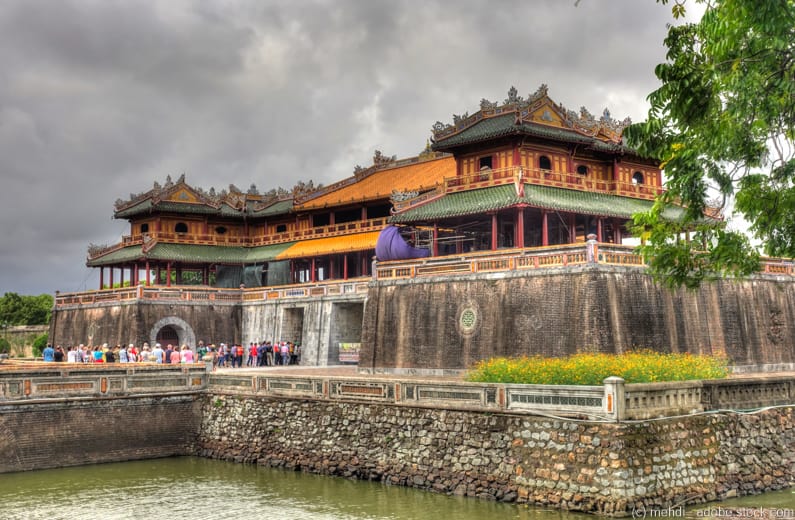
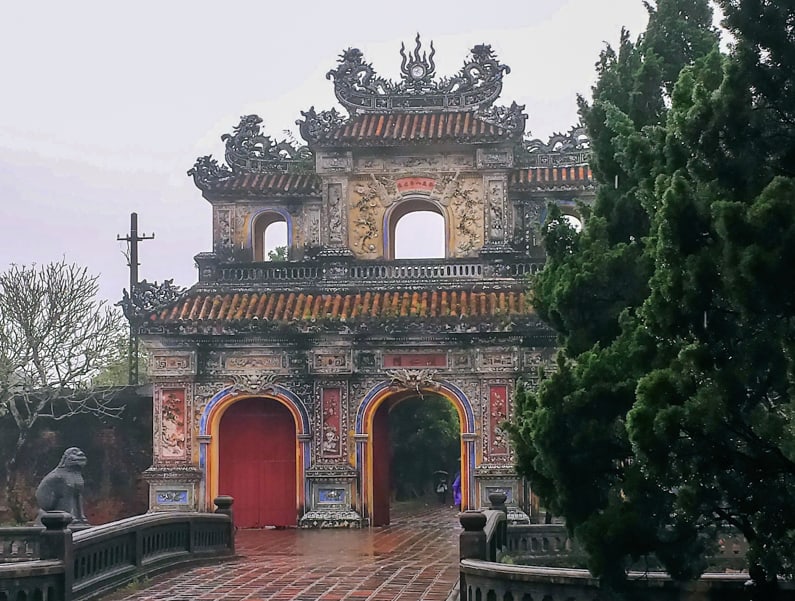
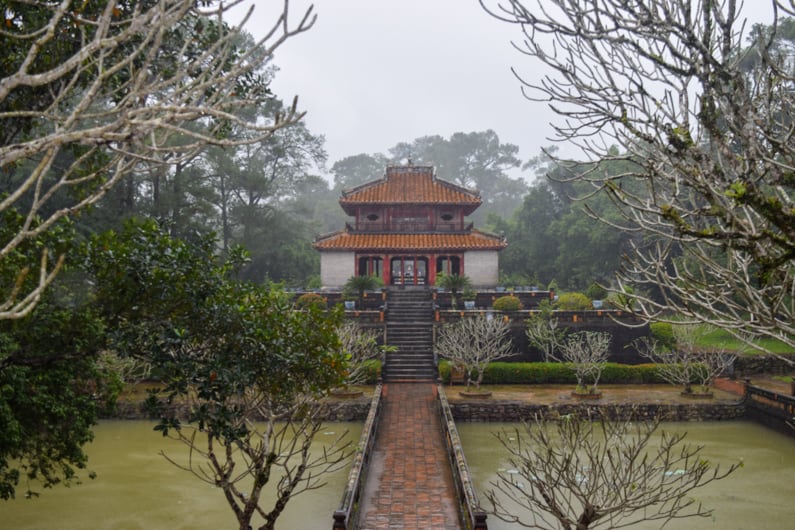
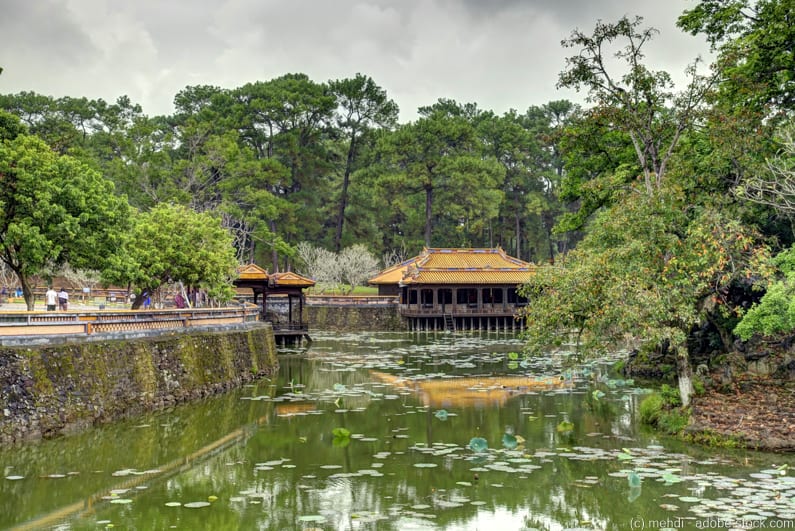

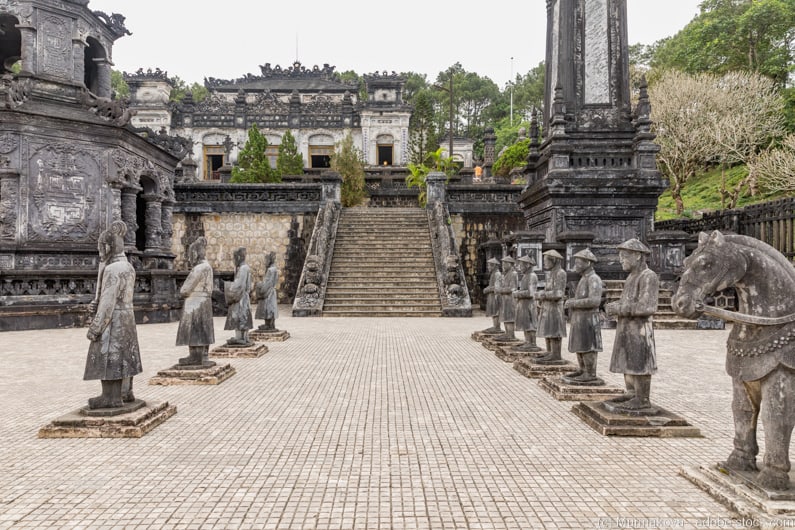
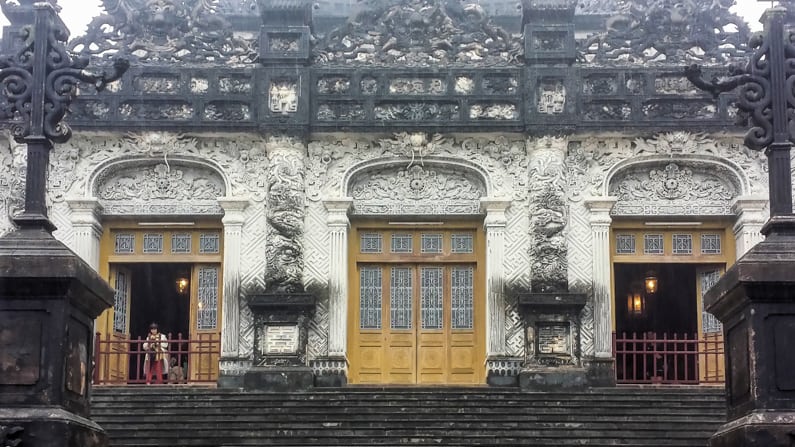

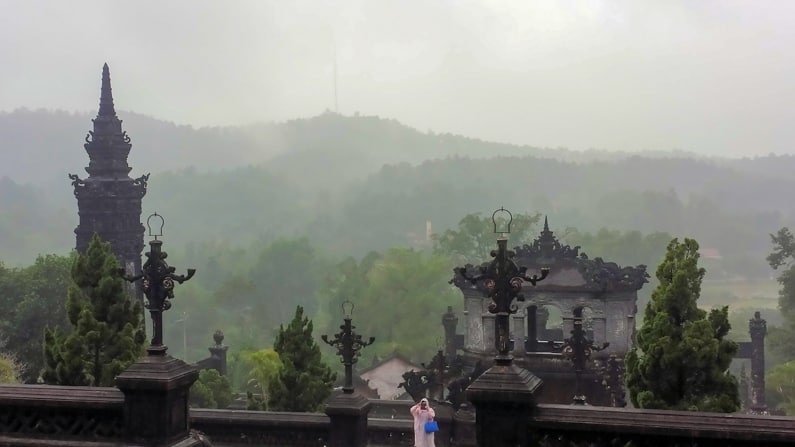
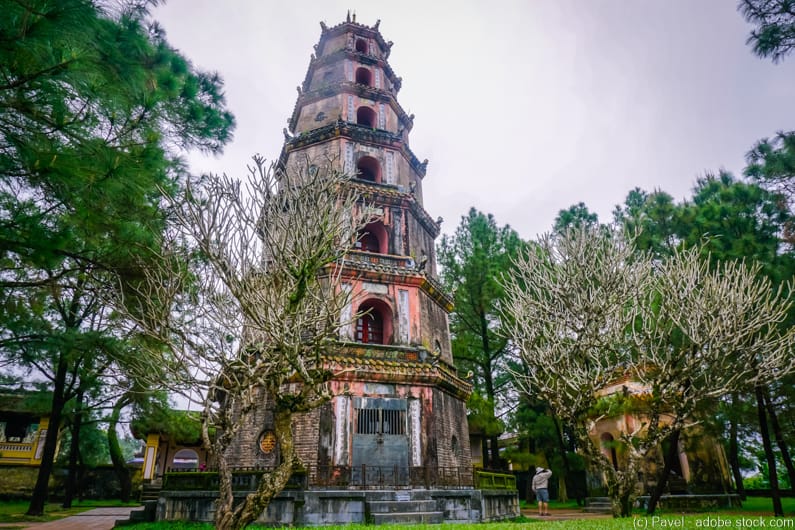













0 Comments